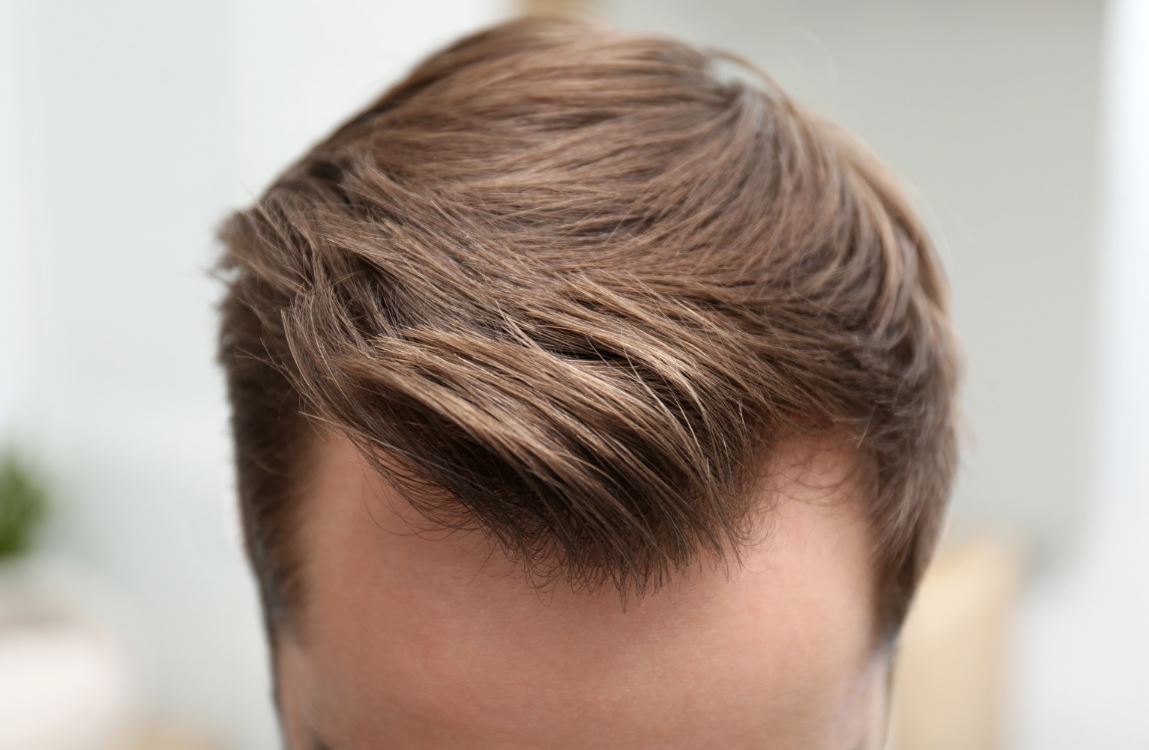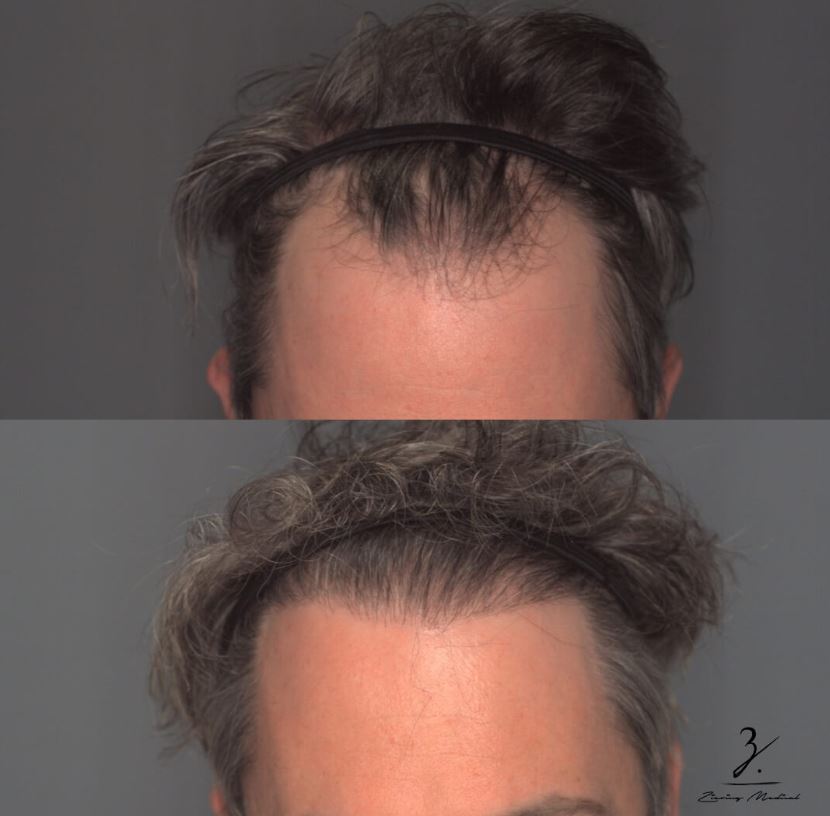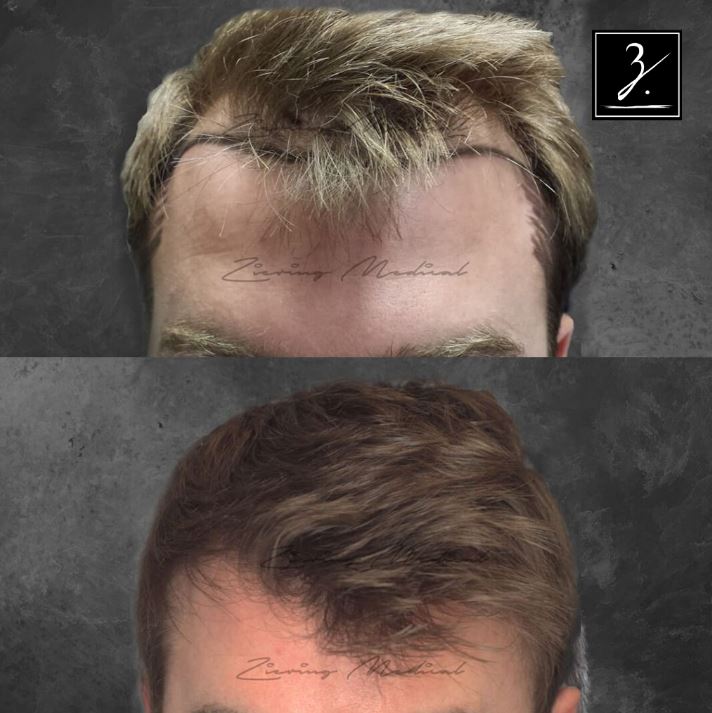Dos and Don’ts After a Hair Transplant Surgery

After your hair transplant, it’s VERY important to give your newly implanted grafts time to settle into their new location. Immediately after surgery, these follicles are still delicate. Proper care will ensure their survival and avoid complications.
At Ziering Medical, we provide our patients with detailed post-op instructions so they can feel confident about managing their post hair transplant healing, caring for those precious newly transplanted hair grafts, and so they can get the most natural-looking hairlines they deserve.
Here is a list of dos and don’ts we want to emphasize after your hair transplant surgery:
DOs After a Hair Transplant
Have someone drive you home.
After your procedure, you may feel groggy from the anesthesia or medication. It’s best to have someone drive you home to ensure your safety.
Take your medications as directed.
Follow the instructions for any prescribed medications, including antibiotics to prevent infection and anti-swelling medication like Prednisone.
Be sure to finish the full course of antibiotics and take the anti-swelling meds with food to avoid nausea.
Shampoo gently.
Starting on Day 1, you may be advised to visit Ziering Medical for a professional hair wash. If you’re washing your hair at home, use the Folican Graft Conditioning Shampoo as instructed.
Create a soapy solution in a cup by mixing the shampoo with water and gently pour it over the hair grafts. Avoid rubbing or letting the shower stream hit the grafts directly.
After washing your hair, apply a thin layer of antibiotic ointment to the donor area as instructed. For MDEE patients, apply the antibiotic ointment until 2 days prior to your suture removal appointment and for FUE patients, apply for 10 days.
Keep your head elevated.
Sleep with your head elevated at a 45-degree angle for the first 3-4 nights after surgery. This helps reduce swelling. Use a recliner or several pillows to support your head and upper body while sleeping or resting. Because you may experience slight post-op bleeding, be selective about your pillowcase choice.
Stay cool and avoid sweating.
Keep cool and avoid activities that cause sweating for at least 7 days after the procedure. For MDEE patients, avoid sweating until suture removal and for both MDEE and FUE patients, avoid strenuous exercise until day 10.
Hydrate the grafted area.
Use the Folican Graft Enhancement DAY spray starting on Day 1. Spritz the grafted area every hour while you’re awake to keep it hydrated. You’ll also use the NIGHT spray once before bedtime.
Minimize swelling.
Apply a gel ice pack to your forehead for 10 minutes every two hours while awake, starting the night of surgery.
Also, gently massage your forehead to move the fluid outward. This helps prevent swelling from getting worse, especially around the eyes, and keeps fluid from building up.
Expose grafts to air.
Allow the grafted area to be exposed to as much air as possible. This promotes healing and reduces the risk of infection.
Let scabs fall off naturally.
Starting on Day 6 when the transplanted hair is considered safe and secure, gently massage the grafted area with the Folican Shampoo/Conditioner to help soften the scabs and let them fall off naturally. Avoid scratching or picking at them to prevent accidentally dislodging a graft.
Protect from the sun.
If you’ll be outside for more than 5 minutes within the first three months after surgery, wear a loose-fitting hat starting on Day 4.
You can apply sunscreen with SPF 30 or higher to the grafted area 10 days after surgery, but be sure to wash it off by the end of the day.
Be gentle with hair styling.
After Day 6, you can start washing your hair normally but be gentle with the grafted area. You may comb your hair carefully, avoiding the scalp.
If using a blow dryer, keep it on a cool setting and hold it a few inches away from your scalp. Avoid using any hair products in the grafted area for the first 5 days.
DON’Ts After a Hair Transplant
Don’t touch the grafts.
Avoid touching, scratching, or picking at the grafts. The newly transplanted follicles are very delicate in the first few days and any interference could lead to dislodging them, delaying the healing process or even causing infection. Don’t allow direct water pressure on the grafts.
When washing your hair during the first 5 days, avoid letting the shower stream directly hit the grafted area. Instead, gently pour soapy water over the area using a cup to protect the grafts. Rinse the soapy water off your scalp and hair by pouring clean water over the same area.
Don’t sleep flat.
For the first 3-4 nights, avoid lying flat while sleeping. Keep your head elevated at a 45-degree angle to prevent swelling.
Sleeping flat could cause fluid to build up in your face and forehead, which may lead to unnecessary discomfort.
Don’t exercise or engage in strenuous activities.
Avoid any physical activities that could increase your heart rate or cause sweating for at least the first 7 days.
For MDEE patients, this means no strenuous exercise until your sutures are removed. For FUE patients, wait until Day 10 before returning to your normal workout routine.
Increased blood pressure can interfere with the healing process and may cause grafts to pop out. Also, strenuous activity can cause the MDEE suture line to stretch.
Don’t drink alcohol or smoke.
Alcohol and smoking should be avoided for at least 5 days post-op (7 days for smoking). Alcohol can thin your blood, leading to more bleeding, while smoking slows down the healing process and impacts blood circulation to your scalp.
Don’t take medications that increase bleeding risk.
Stay away from any medications that contain aspirin or ibuprofen for 5 days after surgery, as these can increase the risk of bleeding. If you need pain relief, stick to Tylenol (acetaminophen) as instructed by your doctor.
Don’t expose the grafts to direct sunlight.
For at least the first 3 months after surgery, avoid exposing your grafts to direct sunlight for more than 5 minutes at a time.
If you need to go outdoors, wear a loose-fitting hat starting on Day 4 or apply sunscreen (SPF 30 or higher) after 10 days.
Don’t rush the removal of scabs.
It’s important to let the scabs in the grafted area fall off naturally. Trying to pick or scratch them off too early can dislodge the grafts and affect your results.
Use gentle shampooing and avoid forceful touching until they fall off on their own by Day 9 or 10.
Don’t look down!
Avoid looking down at your phone or computer especially during the first 3 to 4 days. Looking down increases the swelling.
Don’t Color Your Hair.
Coloring your hair is not advised for 1 month. If you color your hair, you will need to do so 2-3 days prior to your hair transplant procedure. And no scalp bleaching for 6 – 8 weeks.
Don’t use hair products for the first 5 days.
Avoid using any styling products like gels, sprays, or creams on the grafted area for at least 5 days post-op.
These can irritate the grafts or interfere with healing. When blow drying, use the coolest setting and keep it a few inches away from the scalp.
What can ruin a hair transplant?
The success of your hair transplant largely depends on following the post-op instructions carefully. Common actions that might ruin your hair transplant results include:
- Frequently touching or scratching the grafts
- Smoking or drinking alcohol
- Ignoring medication guidelines
- Washing the hair too aggressively
- Failing to protect grafts from the sun
- Exercising or doing strenuous activities too soon
- Using harsh hair products or heat too early
- Ignoring signs of infection
How many days after hair transplant can I sleep normally
You can typically return to sleeping normally about 3-4 days after your hair transplant. However, in the first few days, sleep with your head elevated at a 45-degree angle to minimize swelling and protect the newly transplanted grafts.
Using a recliner or stacking pillows to keep your head and upper body elevated can help. After this initial period, you can usually sleep in your normal position, but always follow the specific recommendations from your Ziering surgeon to ensure the best recovery.
How long does it take to fully recover from a hair transplant?
The first few days after surgery are the most important for healing, as this is when you need to protect the grafts and manage any swelling.
By the end of the second week, most of the visible signs of surgery like redness and scabs will have faded and you can get back to your regular routine including light exercise.
Over the next few months, the transplanted hair may fall out (which is completely normal), and new hair will start to grow in its place. We may also recommend nonsurgical treatments to support your recovery post hair transplant like laser hair therapy and topicals.
By around 4 to 6 months, you’ll notice new hair growth, though it may look a little thin at first. As the months go by, your hair will thicken, and by 12 months, most patients are seeing the full results of the hair transplant.
However, the hair regrowth timeline varies for each patient with some patients, particularly women, achieving the mature result between 15 and 18 months.
Got Questions? Schedule a Private Consultation.
Hair transplantation is a permanent solution for hair loss and can make you look 5-10 years younger than your actual age. We hope these tips will help you get the most out of your hair restoration surgery.
Don’t hesitate to contact us if you have any other questions about the hair transplant procedure. We serve patients all over the greater Tri-state area of New York, New Jersey, and Connecticut as well as the greater Southern California area from Los Angeles and Beverly Hills to Newport Beach and San Diego and Northern California from San Francisco to Atherton, Palo Alto and San Jose.
Real Transformations: Hair Transplant Results

2350 Follicular Units, 1 MDEE Hair Transplant, Showing Pre-Op and 16 Months Post-Op

5698 Follicular Units, 2 FUE Hair Transplants, Showing Pre-Op and 1 Year Post Op Second Procedure

2000 Follicular Units, 1 MDEE (Formerly Known as FUT) Hair Transplant, Showing Pre-Op and 24 Months Post-Op
